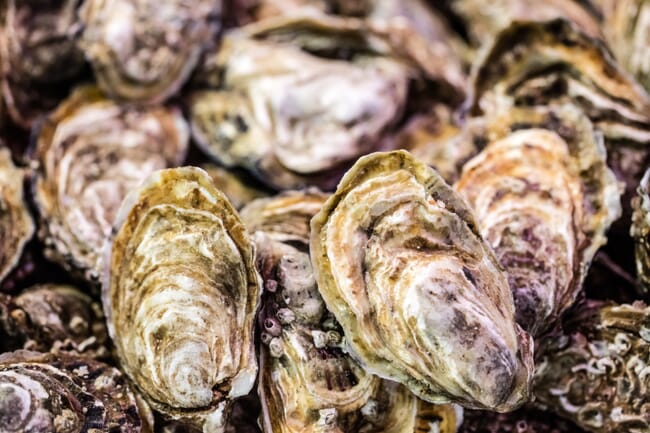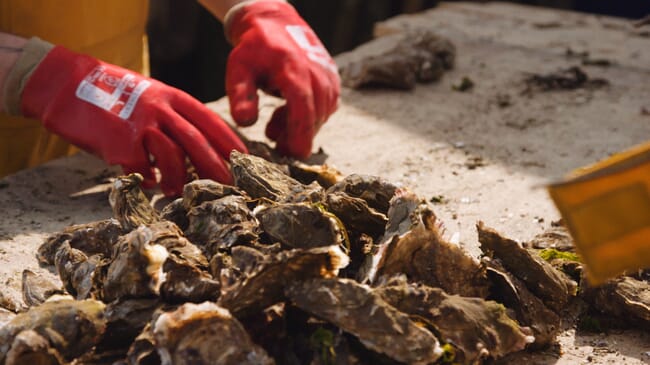
UF/IFAS researchers conducted a market analysis to help Florida oyster farmers identify systematic differences that can help increase profits. When traveling the country, professor Frank Asche noticed that restaurants used a wide variety of sales strategies to sell their oysters. The prices were different, too.
“We had strong indications that Gulf oysters are priced lower than oysters from other regions and are sold with less diversity,” said Asche. “Our Gulf producers appears to be leaving money on the table.”
By investigating restaurant menus as well as conducting a series of interviews with oyster buyers including wholesalers and restaurant owners, the research team found that Gulf oysters are priced lower than oysters in any other region and have fewer attributes that are often advertised to enhance oyster value. Gulf oyster farmers are doing less of what growers in other regions do to increase the value of their product.

© Dorset Coast Forum, Butterfly Effect Films
Oysters’ wide variety of attributes hold value. These are characteristics such as flavour profile, production location, smell, meat colour and saltiness. Researchers found the value of these attributes varies by region. Additionally, the number of attributes listed, not the specific attributes, is what impacted price the most. An oyster with zero listed attributes sold for $3.03 on average whereas an oyster with two or more listed attributes sold for $3.45.
Previous research found that Gulf consumers perceive the quality and safety of oysters from Apalachicola Bay and coastal Louisiana to be higher than other water bodies. On the other hand, non-Gulf consumers perceive the opposite. Frequent oyster consumers prefer farm raised oysters.
“Only in the South do we see that Gulf oysters are prevalent,” said Asche. “But it’s important that oysters from all regions are available in all markets to provide for seasonal variabilities in production. Availability is a significant issue for wholesalers and restaurants. There is a real opportunity if a grower can extend the season or focus on periods when it is harder to get oysters from other regions. We’ve done this successfully with other Florida crops like strawberries and blueberries.”
Trends in imports and consumption show that the United States oyster consumption is moving towards raw, half shell oyster products, which are primarily consumed at restaurants. Oysters can be transported live over a significant distance but cannot be stored out of the water much longer than a week. Timing is essential so that oysters are sold and en route to restaurants and suppliers before they die and the oyster is no longer good for consumption. Additionally, Gulf growers need to ship large enough quantities of oysters to make financial sense for haulers and wholesalers.
“You can’t just ship a single case of oysters. It is not economically feasible,” said Asche. “Volume goes with scale, and it starts with making it worthwhile for transportation companies to establish services to get these Gulf oysters to other regions around the country. These services will only come here regularly if the market is large enough to make it worthwhile for them.”
This project was supported by UF/IFAS SEEDIT research funding and conducted in tandem with research that investigated annual mortality events Florida oyster farmers face during production. The mortality monitoring project developed new recommendations for growers and noted new genetics as a hopeful solution to help combat spring and summer mortalities.
“Reduced mortalities will of course help oyster farmer’s economically and if growers have better control and understanding of mortalities, they can spread out the growth season and be a more consistent supplier,” said Asche.
“No oyster producers can deliver product year-round, but growers can extend their harvest season and availability to varying degrees. Gulf farmers have an opportunity and are moving to explore it but still have a way to go. I think it’s only a matter of time before the Gulf producers will get there, but there are still challenges.”




